Apple Brings M1 to iMac and iPad Pro
Apple is continuing to replace Intel with its homegrown chips.
Apple is continuing its move from Intel to Arm on the desktop, putting its M1 processor new line of iMacs and in the iPad Pro. Both were announced at Apple's "Spring Loaded" virtual event, and are the first time each of those product lines is using the new chip. Previously, the iPad Pro used Apple's custom A-series chips, while the iMac used Intel processors.
iMac
The new iMacs come in seven colors: blue, green, pink, silver, yellow, orange and purple, and are somewhat reminiscent of the iMac G3. They are built from the ground up for the new chips, unlike the 13-inch MacBook Pro, MacBook Air and Mac Mini, which used existing chassis. The new iMac has a redesign with a much-smaller logic board with two tiny fans. Apple says these small fans will keep the computer under 10 decibels, which the human ear shouldn't be able to hear. It's just 11.5 millimeters thin. Apple says the iMac is 85% faster than the previous 21-inch model, which used Intel chips. It also says graphics are up to 2x faster than previous models. In Final Cut, Apple is claiming up to four streams of footage in 1080p, or one in 4K. The company took time to focus on iOS apps working on macOS, as well as the broad range of compatible apps that have come to M1 since it launched last year. The new display is 24-inches diagonally and has narrow bezels, with a 4480 x 2520 resolution and 500 nits of brightness. It also uses TrueTone, like the laptops, to change color temperature based on your surroundings.
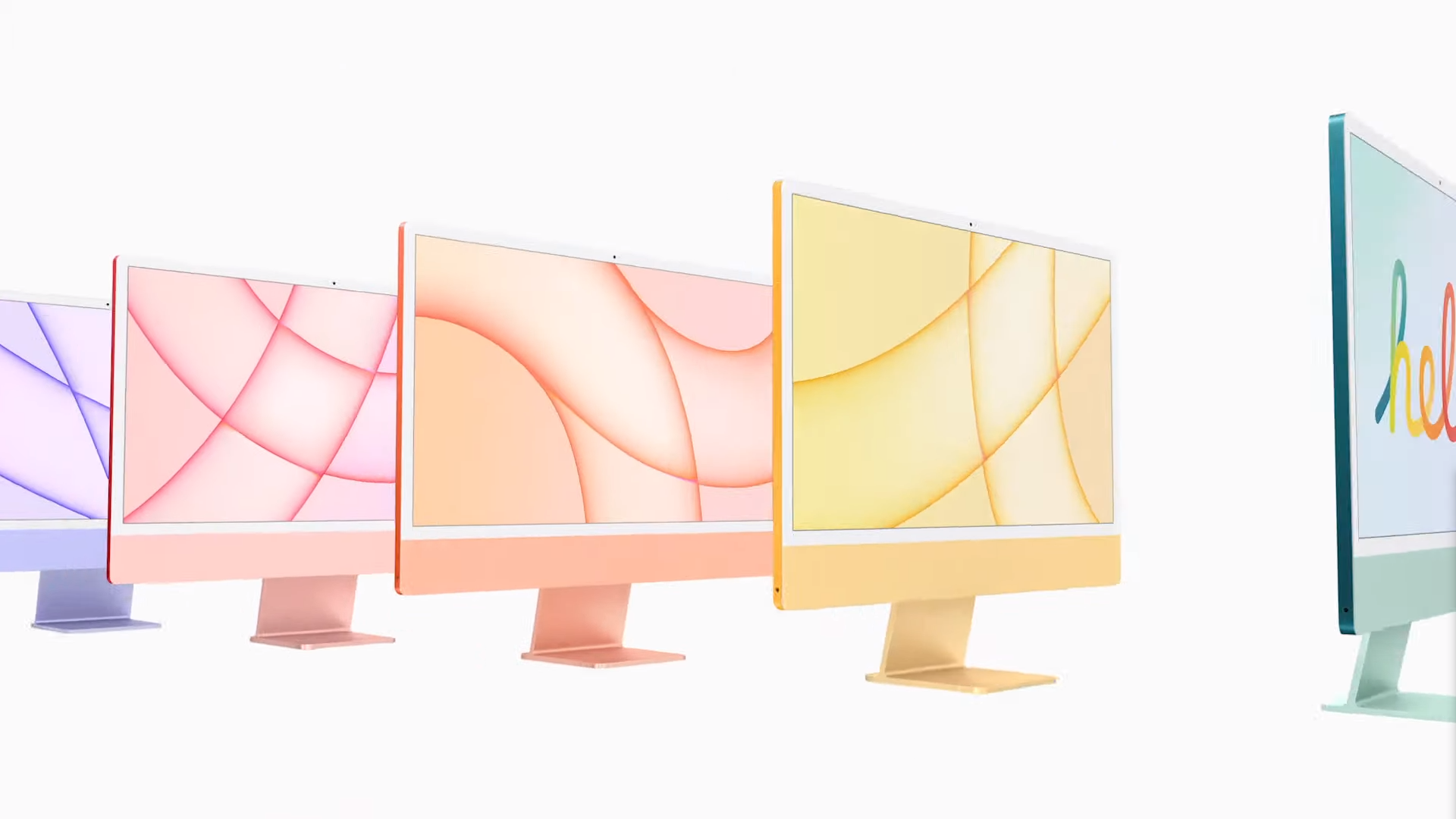



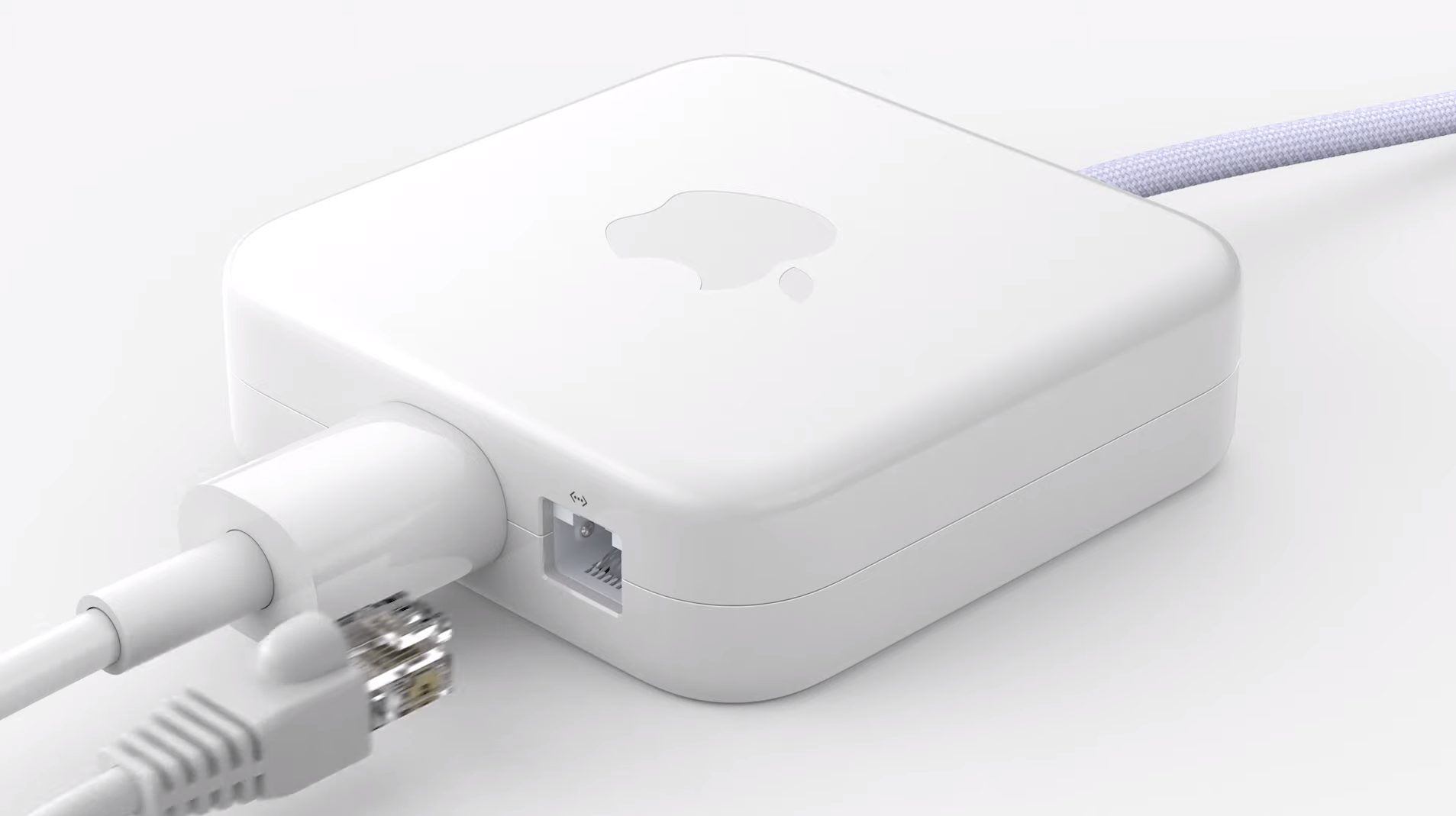

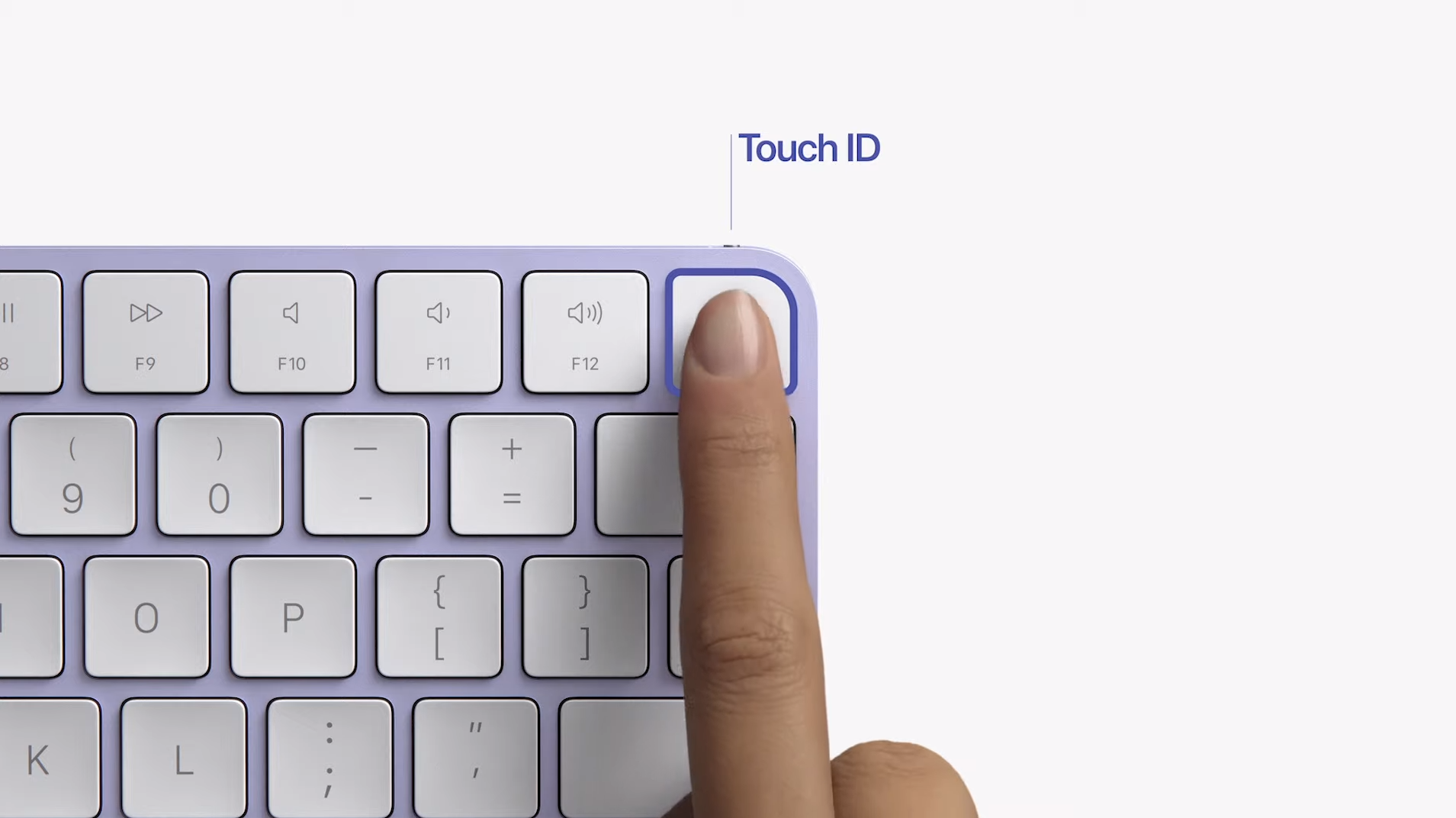
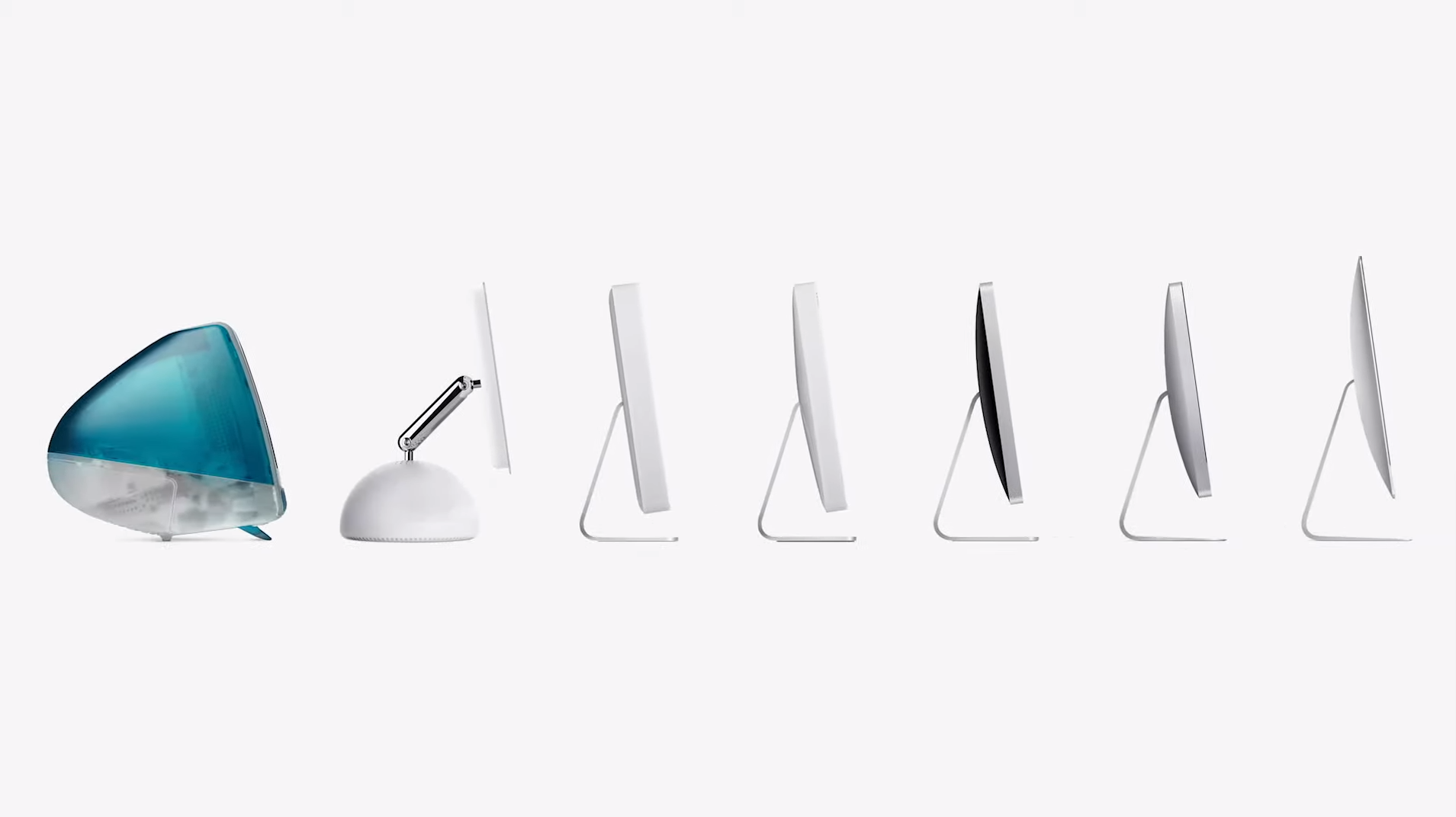
The camera, microphones and speakers are also getting upgraded. The camera is a 1080p FaceTime sensor, higher than the 720p we see in the MacBook laptops. The microphones use beam forming to focus on your voice and avoid background noise. This should all help out in work-from-home situations.
The speakers have increased amounts of power, with increased bass response. The full system is six speakers, including tweeters and woofers. With Dolby Atmos, it supports surround sound.
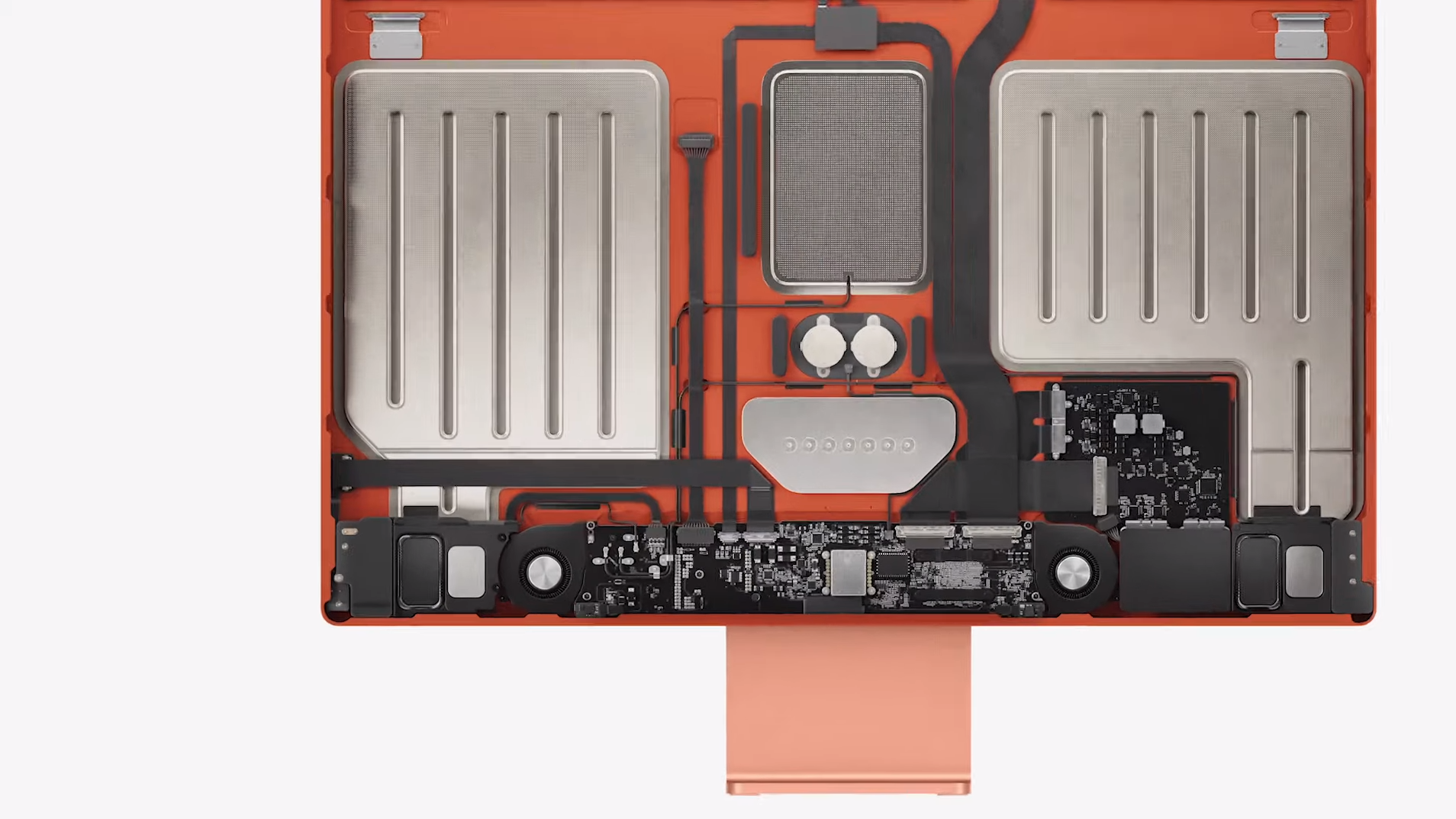
The M1 iMac has 4 USB-C ports, including 2 Thunderbolt ports, with support for a 6K display. There's a new magnetic power connector, with a woven cable, that connects to the power adapter. If you want wired connectivity, Ethernet connects to the power adapter and is routed to the system.
The keyboard has new emoji, spotlight, and do not disturb keys. A separate model will have Touch ID on the desktop for the first time. The Magic Mouse and Magic Trackpad will also have new color-matched aluminum.

The new iMac starts at $1,299 and will be available to order on April 30, shipping in May. At that price you get an 8-core CPU, 7-core GPU, 8GB of RAM and a 256GB SSD, as well as two Thunderbolt ports. At $1,499, that bumps up to an 8-core GPU and also adds two USB 3 Type-C ports.
iPad Pro
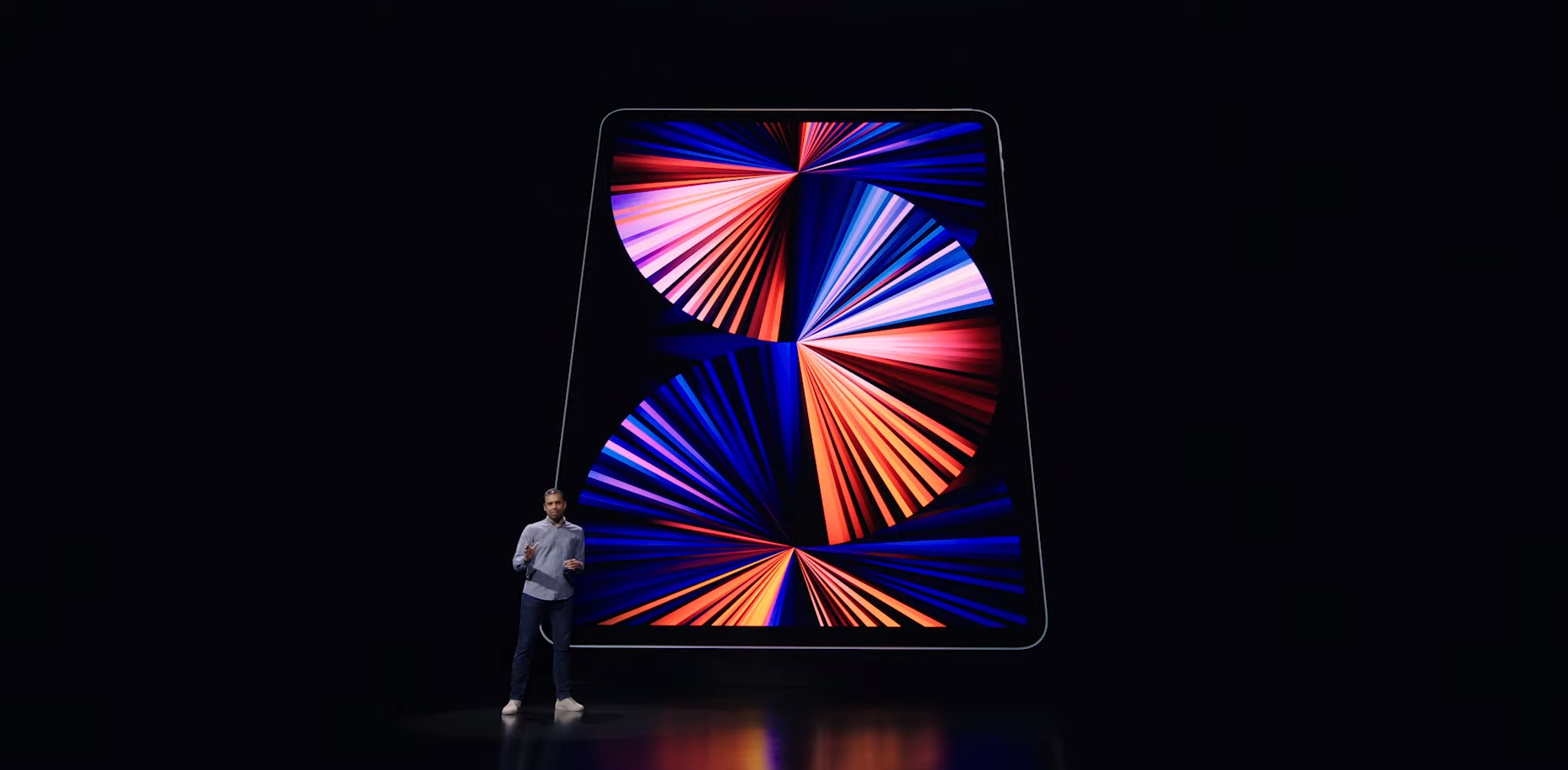
iPadOS will take advantage of M1 as well, being the first non-macOS device to use the new design. Apple said it will offer a 50% jump over the previous iPad Pro. The GPU will be a 40% increase over the last model.
This replaces the A-series chips that Apple previously used in the iPad Pro (and currently uses in the iPhone and other iPads).
Additionally, Apple is touting storage access that is twice as fast as its predecessor, as well as a new 2TB configuration. Notably, the new iPads will have the same 8GB and 16GB RAM options as other M1 devices.
The USB-C port has been upgraded to Thunderbolt with USB 4 support, with four times more bandwidth over the the USB-C port on the previous iPad Pro. It supports more displays and storage as well.

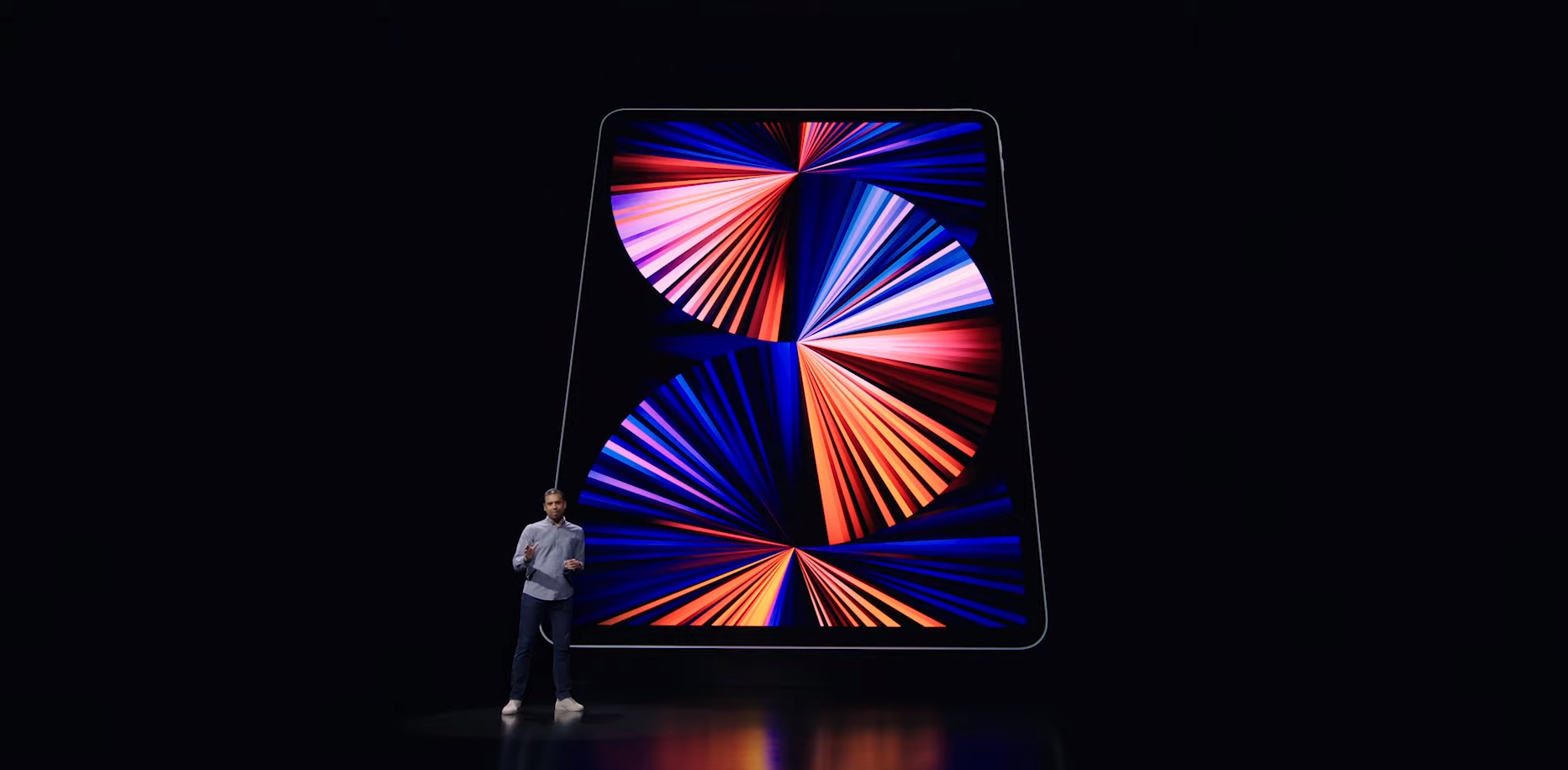
Apple has also added 5G to iPad Pro, making this the first M1 device to feature the technology, and it will support millimeter wave in the United States. There's a TrueDepth camera in the front, and the iPad Pro has a LiDAR camera on the back for AR applications. The TrueDepth shooter has a 12MP ultra wide camera, which can keep people in view from a distance on video calls, using machine learning to move the frame. Apple is changing up the display technology, too. It's moving the 12.9-inch iPad to the same tech as the Pro Display XDR. It's called Liquid Retina XDR, with 1,000 nits of brightness and 1,600 nits at its peak. It also has the same 1,000,000:1 contrast ratio. The 12.9 inch iPad Pro will use a mini-LED display, and the screen is comprised of 10,000 of them. This is Apple's first time using the technology, which is also rumored to move into MacBooks later in the year. It will also support HDR formats like Dolby Vision and HDR 10. The 11-inch iPad Pro is sticking with an LED "liquid retina" screen. The 11-inch iPad Pro will start at $799. The 12.9-inch model with the XDR display starts at $1,099. Orders open April 30, with shipments starting in the second half of May.
Get Tom's Hardware's best news and in-depth reviews, straight to your inbox.

Andrew E. Freedman is a senior editor at Tom's Hardware focusing on laptops, desktops and gaming. He also keeps up with the latest news. A lover of all things gaming and tech, his previous work has shown up in Tom's Guide, Laptop Mag, Kotaku, PCMag and Complex, among others. Follow him on Threads @FreedmanAE and BlueSky @andrewfreedman.net. You can send him tips on Signal: andrewfreedman.01
-
TCA_ChinChin I feel as if the iMac isn't so well priced. I imagine a mac mini with a good monitor (maybe even an Apple brand monitor) could potentially cost less but provide the same experience. Other than that, it seems like much of what was rumored and leaked beforehand was pretty accurate. iPad pro might be expensive, but its yet another iteration that Android/Windows won't be able to catch up to for the next decade or so.Reply -
Pollopesca 8GB of RAM & 256GB SSD for $1500? Going heavy on the Apple tax with weak specs like that. But hey, at least it comes in pretty colors. (y)Reply -
waltc3 As usual, Apple is making things for people who don't know much of anything about what they are buying...;) Same-old, same-old Apple: less is more, and more expensive, too.Reply -
evdjj3j What happens to a Mac owner's Steam library? Will the games run on these chips? Serious question.Reply -
hotaru.hino Reply
Hope that Rosetta 2 works.evdjj3j said:What happens to a Mac owner's Steam library? Will the games run on these chips? Serious question. -
Sippincider 8 gigs memory for everything? Hope it can be BTO to something usable.Reply
My 27" has that just for the graphics, and looks like it'll be soldiering on for a while longer. -
velocityg4 It's just so hideous. They even went to great lengths to give it a chin and powerbrick. When they could have just made it a little thicker. To give it proper cooling, get rid of the chin and bezels. Plus put the PSU inside of it.Reply
This has got to be one of the worst looking Macs ever. 8GB RAM and 16GB Max is just laughable. It should have been 16GB and 32GB Max at least. -
Sippincider Replyvelocityg4 said:This has got to be one of the worst looking Macs ever.
For sheer hideousness it'll be tough to outdo the Macintosh TV.
But for overall poor decisions they may have cut new ground. Did anyone inside Apple actually sit down and use one in development? Or was it designed completely by PowerPoint/Keynote meetings?